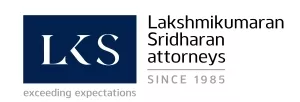- within Intellectual Property topic(s)
- within Technology, Government and Public Sector topic(s)
This article provides a brief step-by-step guide on obtaining a licence or certificate of conformity from the Bureau of Indian Standards for machinery and electrical equipment pursuant to the Machinery and Electrical Equipment Safety (Omnibus Technical Regulation) Order, 2024 ('OTR Order').
What is the OTR Order?
The OTR Order was issued by the Ministry of Heavy Industries ('MHI') under Section 16 of the Bureau of Indian Standards Act, 2016 ('BIS Act'). This provision empowers the Central Government to mandate the use of a Standard Mark when deemed necessary in the public interest, or for the protection of human, animal, or plant health, safety of the environment, or other valid reasons.
Once notified, the manufacturing, sale, import, distribution, and storage of products covered under the OTR Order shall be prohibited without the requisite Standard Mark.
The OTR Order covers 20 categories of machinery and electrical equipment. It mandates that the covered products must bear a Standard Mark under a licence or certificate of conformity ('COC') granted by the Bureau of Indian Standards ('BIS') under Scheme X of the Bureau of Indian Standards (Conformity Assessment) Regulations, 2018 ('Conformity Assessment Regulations').
What are Conformity Assessment Regulations?
In order to allow application of an Indian Standard Mark on a product, the BIS must first ascertain whether the product fulfills all the requirements of the specified Indian Standard. This demonstration of conformity is carried out through the process set out in the Conformity Assessment Regulations.
Under these Regulations, BIS has notified ten different types of conformity assessment schemes. These schemes apply to different categories of products and are designed to ensure compliance with Indian Standards. Scheme X is one such scheme, specifically applicable to certain Quality Control Orders including the OTR Order.
Scheme X of the Conformity Assessment Regulations
Scheme X was introduced into the Conformity Assessment Regulations through an amendment in 2022. It currently applies to two Quality Control Orders, both issued by the MHI, including the OTR Order.
Scheme X provides for two types of certification:
- Licence: A licence is granted for continuous use of the Indian Standard Mark. Under Scheme X, a licence is initially issued for a minimum period of three years.
- Certificate of Conformity or COC: A COC is only granted for a specific product prototype, lot, or batch of product. It allows one-time or limited use of the Indian Standard Mark.
To comply with the OTR Order, manufacturers must apply for a BIS Licence or COC under Scheme X.
It is important to note that under Scheme X, only the manufacturer, i.e., the entity responsible for design and manufacturing of a product is eligible to apply for a licence or COC.
Types of applicants:
- Domestic manufacturers: They can apply online through the Manak Online Portal.
- Foreign manufacturers: They must submit a printed application in hard copy to BIS and nominate an Authorized Indian Representative ('AIR').
Pre-Application preparation
Before submitting the application, an applicant must undertake the following preparatory steps:
(A) Identifying the applicant, i.e., the manufacturer
Before preparing an application, identification of the manufacturer is key, i.e., the entity responsible for both design and manufacturing of the covered product. This step is critical, as BIS will only grant licence or COC to the manufacturer, and therefore, only such entity can be the applicant.
In complex supply chains, identifying the manufacturer may require careful analysis. Some common scenarios include:
- Design of a product is handled by a different entity. Production is being undertaken by a different entity.
- Multiple sub-contractors manufacture different assemblies of the product, which are ultimately assembled at the client's site. Designer is a different entity.
- Safety testing of key sub-assemblies is conducted at a sub-contractor's facility, while final assembly is performed by another entity that does not have its own testing infrastructure.
These are just a few scenarios that may emerge considering the complexity of value chains. Each situation requires a thorough examination of roles and responsibilities of different entities to ensure that the correct entity is identified as the manufacturer for the purpose of BIS application.
(B) Identifying the applicable Indian Standards
Once the manufacturer has been identified, the next step is to determine the Indian Standards applicable to the product for which the licence or COC is sought.
For products covered under the OTR Order, the following standards apply:
- Type A Standard: All covered products must conform to IS 16819: 2018 / ISO 12100: 2010.
- Type B Standard: These are generic Safety Standards that apply across a wide range of machinery and electrical equipment. They are provided in the Second Schedule of the OTR Order.
- Type C Standard: These standards provide detailed safety requirements for a specific machine or group of machines. They are provided in the Third Schedule of the OTR Order.
Preparing the application
When the manufacturer and the applicable Indian Standards have been identified, an application under Scheme X can be prepared. Each application must include the following:
Form I – This is the primary application form for grant of licence or COC. It includes details of the company, factory location, management, technical personnel, and the product for which certification is sought.
Form II – This form is required only for foreign manufacturers. It is used to nominate an Authorized Indian Representative (AIR).
Technical File: Along with each application, a technical file is to be submitted. It includes the following:
- Product description with details of variety or grades or types or size as applicable.
- Specified requirements applicable for the product.
- Photograph(s) for identification of the product.
- Manufacturer's name and complete address.
- Detail for identification and traceability of product like brand name, trademark, date of manufacturing, batch or lot or serial number, etc., as applicable.
- Detail of design of the product including drawing(s) as applicable.
- Description of manufacturing process as relevant.
- Raw material details as applicable.
- Report of compliance of the product to the specified requirement which may include test report from third party laboratory or from manufacturer's own laboratory as applicable.
- Details of in-house quality assurance measures including inspection, test plan and facilities, as applicable.
- Instructions for use, maintenance, installation, safe operation of the product, as applicable.
- Any other requirement specified for the product.
Submission of application and Post-Submission Process
Once all required documents and details are compiled, the application can be submitted. The domestic manufacturers can submit the application online by registering on the Manak Online portal1 and foreign manufacturers will have to submit physical copies of the application. However, pre-registration on Manak Online portal is mandatory for foreign manufacturers as well before they submit physical copies of the complete application.2
After submission, the process will be as follows:
Evaluation by BIS:
- Application Scrutiny – BIS first checks whether the application is complete. In case the BIS needs any additional documents, they will inform the applicant about it.
- Desk Evaluation – BIS reviews the documents in the technical file for conformity of the product to the specified requirements in the applicable Indian Standards.
Inspection and Testing –
- Physical Audit – BIS officers may inspect a manufacturing facility.
- Sample Testing – Samples, where collected by the BIS officer during physical audit, are tested at a BIS designated laboratory.
Grant of Licence or CoC
If the product meets all applicable requirements, BIS will issue:
- A Licence (Form III) for continuous marking of products.
- A Certificate of Conformity (CoC) (Form IV) for specific lots or prototypes.
Foreign applicants who are granted a license must submit the following on a INR 100 non-judicial stamp paper:
- Form V – Agreement for grant of licence.
- Form VI – Indemnity bond.
Additionally, a performance bank guarantee of USD 10,000 must be submitted. This can be:
- Issued by a bank with an RBI-approved branch in India, or
- Provided in equivalent Indian Rupees based on the exchange rate at the time of grant of licence.
Footnotes
1. Link to Manak Online portal https://www.bis.gov.in/scheme-x-certification/registration-portal-otr/
2. Ibid.
The content of this article is intended to provide a general guide to the subject matter. Specialist advice should be sought about your specific circumstances.
[View Source]


